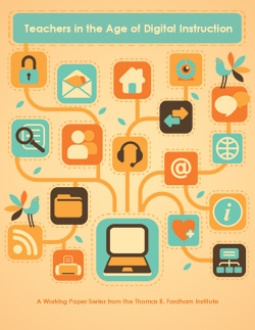Will the move toward virtual and “blended learning” schools in American education repeat the mistakes of the charter-school movement, or will it learn from them?
Try this thought experiment: How much more successful might U.S. charter schools look today if, at the beginning of the charter movement two decades ago, proponents had spent the time and effort to consider what policies and supports would be needed to ensure its quality, freedom, rules and resources over the long term? What mistakes might have been avoided? Damaging scandals forestalled? Missed opportunities seized?
We can’t go back in time for charters but we can be smarter about the next major phase of education reform and innovation: taking high-quality virtual and blended schools to scale—and to educational success. To this end, the Thomas B. Fordham Institute, with the support of the Charles and Helen Schwab Foundation, has commissioned five deep-thought papers that, together, address the thorniest policy issues surrounding digital learning. The goal is to boost the prospects for successful online learning (both substantively and politically) over the long run.
In a new paper, “Teachers in the Age of Digital Instruction,” Public Impact’s Bryan and Emily Hassel “propose that digital education needs excellent teachers and that the teaching profession needs digital education.”
They propose a smaller—but more talented and better paid—teaching force with its impact magnified through the expanded reach and efficiency allowed by digital technology. “Time-technology swaps” allow the unbundling of teacher roles and the more efficient use of their time, supported by new, lower-paid positions with appealing, shorter hours. Realizing the potential of this new system requires, however, that policymakers revamp everything from certification to teacher preparation, from compensation to class size.



